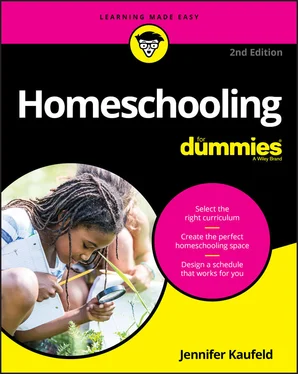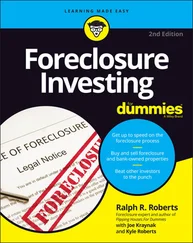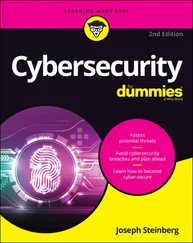 If you live in a state that prides itself on being a pain to work with (based on comments from homeschoolers around the country, a couple of states are actually a pain for homeschoolers), then you may want to enroll in a satellite school program and avoid much of the hassle. In California, you’d want a Private School Satellite Program, or PSP. Enrolling as a satellite school gives you freedom to teach whatever you want, yet you still have someone on the paperwork end of the spectrum that you can turn to. See Chapter 10for more information about PSPs.
If you live in a state that prides itself on being a pain to work with (based on comments from homeschoolers around the country, a couple of states are actually a pain for homeschoolers), then you may want to enroll in a satellite school program and avoid much of the hassle. In California, you’d want a Private School Satellite Program, or PSP. Enrolling as a satellite school gives you freedom to teach whatever you want, yet you still have someone on the paperwork end of the spectrum that you can turn to. See Chapter 10for more information about PSPs.
Chapter 4
Pulling Them Out and Starting from Scratch
IN THIS CHAPTER
 Transitioning to homeschool
Transitioning to homeschool
 Working together as a family
Working together as a family
 Homeschooling from the very beginning
Homeschooling from the very beginning
 Drawing on strengths and teaching skills that you lack
Drawing on strengths and teaching skills that you lack
So you decided to remove your children from their brick-and-morter schools. Now what? How you begin your adventure together sets the tone for the next few months, at least. Like any new habit, starting your homeschool takes a few weeks to get into the flow.
Starting your homeschool journey with older children is a bit different than jumping into the construction-and-rounded-scissors world of the preschooler or kindergartener. The young ones exude excitement. They’re ready to go, ready to learn, ready to explore. Their older siblings — not so much. This chapter gives you suggestions for those starting weeks and months, whether you are beginning with young kids who’ve never been to school or you’re pulling older and more jaded teenagers from their classes to continue their education at home.
Making Those First Days Count
Your older kids are stressed. They’ve been bullied. They lag behind in schoolwork. They’re depressed and ill. When you pull kids out due to any of these situations, they need time to reorient themselves. You may be excited and ready to go with a two-foot high stack of brand-new shiny textbooks, but they need a break!
Making your first days count means more than jumping headfirst into a new curriculum and schedule before anyone is ready. It means taking the time to build a great foundation that will help you through the rest of your years together. Regardless whether Great-Grandma thinks you should pull them out on Friday and start advanced chemistry on Monday, there’s more to removing a child from school than yanking them from the building and setting up school desks at home.
De-stressing the children
Especially if your kids are coming into your homeschool after emotional or physical trauma at school, they need time to chill. Childhood burnout is a real entity, and kids show it in much the same way as adults: exhaustion, indifference, anger, negative attitudes. If you think about the times you’ve experienced extreme stress or burnout, you know what that feels like. Do you want to jump into new projects? (I know when I face times like these, I’d rather sit and mindlessly eat enough peanut butter cups to count as dinner.)
Homeschoolers have a term for taking time out to de-stress. It’s called deschooling. Deschooling isn’t the same as spending the day staging I-can-eat-more-chocolate-than-you contests. It’s not sleeping the day away in an attempt to forget about the school experience you just left. It is, however, a complete change in routine that allows your new students to regain their grasp of their own schedules and their lives.
A deschooling family explores together. You might:
Visit local parks or hike through some trails. Exercise together is always good.
Spend hours immersed in the literature of your choice, whether that’s a graphic novel, mystery stories, science fiction, or something else. While you’re at it, get to know the library and everything it has to offer, from classes to some genre you’ve never read.
Watch movies together, especially those movies you always wanted to see but never had the time. This is a great time to explore comedy!
Practice an old hobby or pick up a new one. You might opt for individual hobbies or one everyone can get their hands into (like small engine repair).
Spend time in the kitchen cooking, developing recipes, or exploring a new cuisine. Breadmaking is chemistry, art, and culture all rolled into one neat and tasty package.
As you can see, these are all learning activities. They are not, however, academic subjects per se. You can still learn while allowing the children time to relax, catch their breath, and remember who they are.
 Be gentle with yourselves during the transition. De-stressing from a traumatic educational experience could require several months, or more, of low-key family engagement time before the student feels like she can face formal learning again. If you end a school year intending to homeschool, three of those months occur over summer vacation, but it still may not be enough time for a middle or high schooler to feel refreshed and ready to go again.
Be gentle with yourselves during the transition. De-stressing from a traumatic educational experience could require several months, or more, of low-key family engagement time before the student feels like she can face formal learning again. If you end a school year intending to homeschool, three of those months occur over summer vacation, but it still may not be enough time for a middle or high schooler to feel refreshed and ready to go again.
When you do begin coursework, especially if you plan to use textbooks for your subjects, you may want to slowly work your way into a full day. (Remember that two-foot-high stack of textbooks mentioned earlier? I guarantee that all your students won’t approach that stack with as much glee as you do.) Going from an easy, relaxed day to all-textbooks-all-the-time is jarring at best, and you may find that it brings out the beast in your little beauties.
You have all year to get this material into the kids. And really … do we need to do spelling Every Single Week? (I admit it — I’m a spelling class rebel.) Looking at your 36-week calendar, or however long you have until the end of the year if you’re starting after a deschooling period, what strikes you as most important? What do you think would be the kids’ favorite subject?
With those answers in mind, start to think out your schedule. What if you started with their favorite subject first? (Radical, I know.) Do that subject only for a few days. Then, maybe on Thursday, introduce another class and do two classes for the remaining days of that week. First week: done! The next week, you add a third subject on Monday, and if you think they’re ready, a fourth on Wednesday. If not, go all week with three subjects. No one will die. No one. Not one person will swoon to the floor, never to move again, if the kids only experience three subjects by the end of week two.
I know you want to do it all right this second — I did too, when I started. Heck, I still want to do it all every single August. I love the start of the school year! Unfortunately, I love it more than any of my kids ever did. I learned to temper my overwhelming enthusiasm after looking into very glazed eyes the the first week of school.
 If it really, really bothers you that you aren’t doing a full day of school, then you continue with the school day. Wait — hear me out. Finish your two or three or four subjects for the day, send the kiddos off to relax or play or read, and you can keep going. Take out an art book and work on your drawing skills. Write a diary entry, a short story, or a letter. Dig out that dusty copy of Euclid and begin working through his proofs. Learn to write shorthand. Not only will you feel like you completed a full school day, but you’ll pick up a new skill along the way that you can introduce to the children at some later time. Keeping your mind sharp is just as important as helping your kids with theirs. Add a cup of your favorite coffee or tea and this becomes Me Time.
If it really, really bothers you that you aren’t doing a full day of school, then you continue with the school day. Wait — hear me out. Finish your two or three or four subjects for the day, send the kiddos off to relax or play or read, and you can keep going. Take out an art book and work on your drawing skills. Write a diary entry, a short story, or a letter. Dig out that dusty copy of Euclid and begin working through his proofs. Learn to write shorthand. Not only will you feel like you completed a full school day, but you’ll pick up a new skill along the way that you can introduce to the children at some later time. Keeping your mind sharp is just as important as helping your kids with theirs. Add a cup of your favorite coffee or tea and this becomes Me Time.
Читать дальше

 If you live in a state that prides itself on being a pain to work with (based on comments from homeschoolers around the country, a couple of states are actually a pain for homeschoolers), then you may want to enroll in a satellite school program and avoid much of the hassle. In California, you’d want a Private School Satellite Program, or PSP. Enrolling as a satellite school gives you freedom to teach whatever you want, yet you still have someone on the paperwork end of the spectrum that you can turn to. See Chapter 10for more information about PSPs.
If you live in a state that prides itself on being a pain to work with (based on comments from homeschoolers around the country, a couple of states are actually a pain for homeschoolers), then you may want to enroll in a satellite school program and avoid much of the hassle. In California, you’d want a Private School Satellite Program, or PSP. Enrolling as a satellite school gives you freedom to teach whatever you want, yet you still have someone on the paperwork end of the spectrum that you can turn to. See Chapter 10for more information about PSPs. Transitioning to homeschool
Transitioning to homeschool










